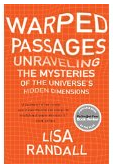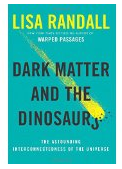Lisa Randall: Difference between revisions
Jarmbruster3 (talk | contribs) |
Jarmbruster3 (talk | contribs) No edit summary |
||
| Line 8: | Line 8: | ||
Lisa Randall was born on June 18, 1962 in Queens, New York. She grew up in New York and graduated from Stuyvesant High School in 1980. Interestling enough, another famous physicist, Brian Greene, was one of her high school classmates. After graduating, Randall attended Harvard University where she earned both her A.B. and her Ph.D. in physics. Randall earned her Ph.D. in Pparticle physics under the direction of Howard Georgi. After graduating from Harvard, Randall began her career in Academia with professorships at both MIT and Princeton University. Randall was the first woman to earn tenure in the Princeton Physics Department and the first female theoretical physicists to earn tenure in the Harvard Physics Department. | Lisa Randall was born on June 18, 1962 in Queens, New York. She grew up in New York and graduated from Stuyvesant High School in 1980. Interestling enough, another famous physicist, Brian Greene, was one of her high school classmates. After graduating, Randall attended Harvard University where she earned both her A.B. and her Ph.D. in physics. Randall earned her Ph.D. in Pparticle physics under the direction of Howard Georgi. After graduating from Harvard, Randall began her career in Academia with professorships at both MIT and Princeton University. Randall was the first woman to earn tenure in the Princeton Physics Department and the first female theoretical physicists to earn tenure in the Harvard Physics Department. | ||
== | ==Scientific Contributions== | ||
What are the mathematical equations that allow us to model this topic. For example <math>{\frac{d\vec{p}}{dt}}_{system} = \vec{F}_{net}</math> where '''p''' is the momentum of the system and '''F''' is the net force from the surroundings. | What are the mathematical equations that allow us to model this topic. For example <math>{\frac{d\vec{p}}{dt}}_{system} = \vec{F}_{net}</math> where '''p''' is the momentum of the system and '''F''' is the net force from the surroundings. | ||
== | ==Publications== | ||
Warped Passages: Unraveling the Mysteries of the Universe's Hidden Dimensions [[File:Warped.png|150px|thumb|right|]] | |||
Dark Matter and the Dinosaurs: The Astounding Interconnectedness of the Universe [[File:Dark_Matter.png|150px|thumb|right|]] | |||
Knocking on Heaven's Door: How Physics and Scientific Thinking Illuminate the Universe and the Modern World [[File:Knocking.png|150px|thumb|right|]] | |||
Higgs Discovery: The Power of Empty Space [[File:Higgs.png|150px|thumb|right|]] | |||
==Connectedness== | ==Connectedness== | ||
Revision as of 19:43, 5 December 2015
Created by Jennifer Armbruster GTID- jarmbruster3

Personal Background
Lisa Randall was born on June 18, 1962 in Queens, New York. She grew up in New York and graduated from Stuyvesant High School in 1980. Interestling enough, another famous physicist, Brian Greene, was one of her high school classmates. After graduating, Randall attended Harvard University where she earned both her A.B. and her Ph.D. in physics. Randall earned her Ph.D. in Pparticle physics under the direction of Howard Georgi. After graduating from Harvard, Randall began her career in Academia with professorships at both MIT and Princeton University. Randall was the first woman to earn tenure in the Princeton Physics Department and the first female theoretical physicists to earn tenure in the Harvard Physics Department.
Scientific Contributions
What are the mathematical equations that allow us to model this topic. For example [math]\displaystyle{ {\frac{d\vec{p}}{dt}}_{system} = \vec{F}_{net} }[/math] where p is the momentum of the system and F is the net force from the surroundings.
Publications
Warped Passages: Unraveling the Mysteries of the Universe's Hidden Dimensions

Dark Matter and the Dinosaurs: The Astounding Interconnectedness of the Universe

Knocking on Heaven's Door: How Physics and Scientific Thinking Illuminate the Universe and the Modern World

Higgs Discovery: The Power of Empty Space

Connectedness
I chose to do research on a famous female physicists who worked in Academia because I hope to one day become a professor. When looking for a female physicist, I came across Lisa Randall and was blown away by how much she had already contributed as a theoretical physicist at the age of 53. R Randall's research does not apply to my major as I am Industrial and Systems Engineering, but her achievements do help inspire me to achieve my goal of working in Academia. However, Lisa Randall's research relates to the topics we have covered in this class.
Fun Fact
Lisa Randall has a sister who is just as brilliant as she is, Dana Randall. Dana Randall is a professor of theoretical computer science here at Georgia Tech. She is also the Director of the Algorithms and Randomness Center and the ADVANCE Professor of Computing. Needless to say, the Randall sisters are both notable female scientists in their respected fields.